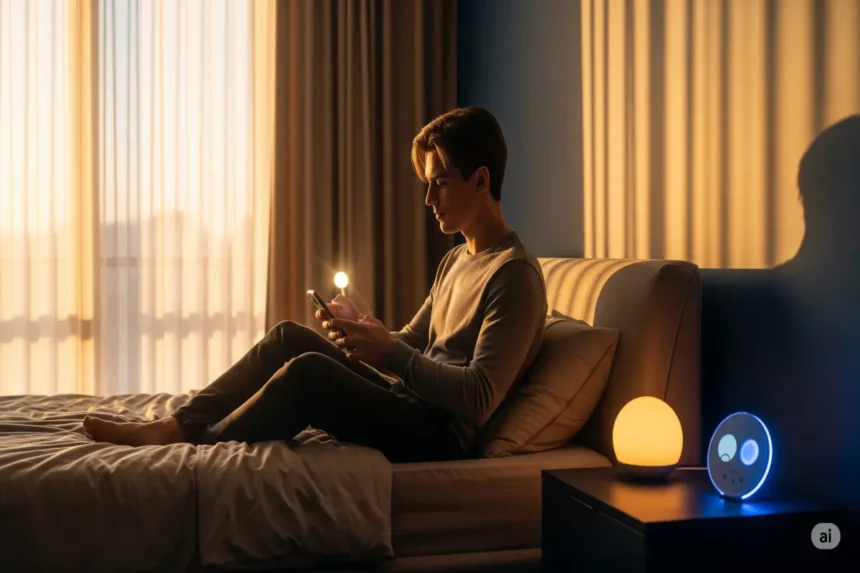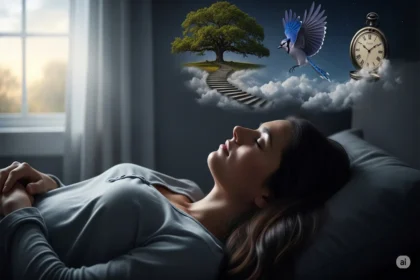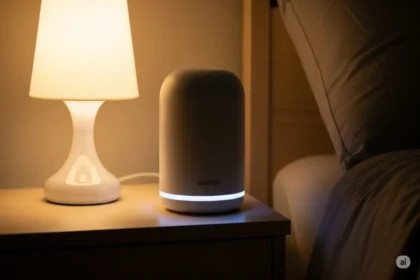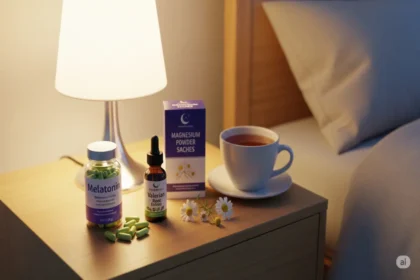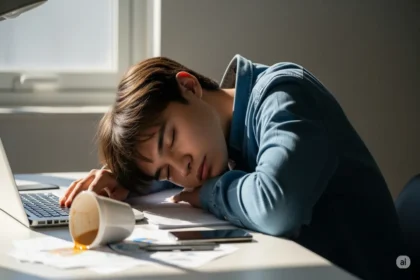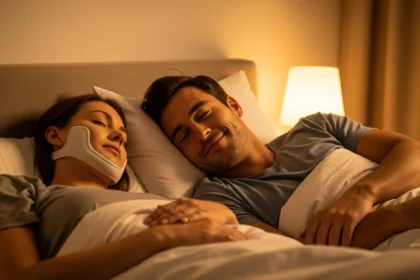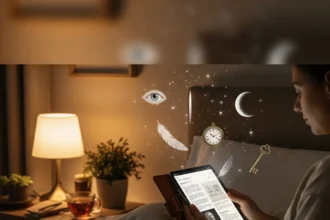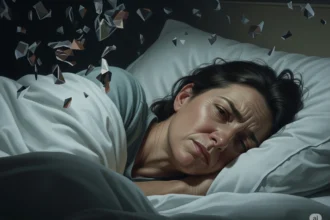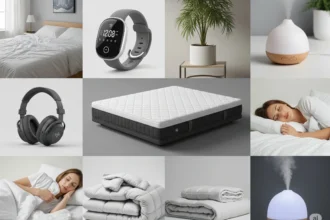The quest for a perfect night’s sleep often leads us to focus on mattresses, pillows, and bedtime routines. Yet, one of the most fundamental, often overlooked, architects of our slumber is something we encounter every waking moment: light. The profound and intricate Power of Light to shape our sleep is a cornerstone of modern chronobiology, revealing that both natural sunlight and artificial illumination play critical roles in orchestrating our internal body clock, influencing everything from when we feel alert to when we drift into restorative rest. Understanding how to strategically harness light can be a transformative step towards achieving deeper, more consistent, and truly rejuvenating sleep.
Imagine a cave-dwelling ancestor, their days governed by the sun’s arc and their nights by the moon’s glow. Their sleep-wake cycle was perfectly synchronized with the natural world. Now, consider a modern city dweller, bathed in the glow of screens until midnight, then roused by artificial alarms before dawn. This stark contrast highlights a fundamental disconnect. Our bodies evolved over millennia to respond to the natural light-dark cycle, a rhythm that dictates our circadian clock – the internal 24-hour timer that regulates our sleep, hormones, metabolism, and countless other biological processes. When we disrupt this ancient dialogue with light, our sleep suffers, and with it, our overall health and well-being.
The Master Clock: How Light Orchestrates Your Circadian Rhythm
At the heart of our sleep-wake cycle lies the circadian rhythm, an internal biological clock located in a tiny region of the brain called the suprachiasmatic nucleus (SCN) within the hypothalamus. This “master clock” is exquisitely sensitive to light. Light is the most powerful external cue (zeitgeber) that synchronizes our SCN with the 24-hour day.
When light hits specialized photoreceptors in our eyes (called intrinsically photosensitive retinal ganglion cells, or ipRGCs), it sends signals directly to the SCN. These signals tell the SCN whether it’s day or night, and the SCN, in turn, orchestrates the release of various hormones and neurotransmitters that regulate our alertness and sleepiness.
The most critical hormone in this process is melatonin. Often called the “hormone of darkness,” melatonin production begins to rise in the evening as light fades, signaling to the body that it’s time to prepare for sleep. It peaks in the middle of the night and then gradually declines towards morning. Conversely, bright light, especially blue light, effectively suppresses melatonin production, promoting wakefulness. This elegant system ensures that, under natural conditions, we feel alert during the day and sleepy at night.
Harnessing Natural Light: Your Daytime Ally for Nighttime Sleep
The sun is our most potent tool for regulating our circadian rhythm and promoting healthy sleep. Strategic exposure to natural light, particularly in the morning, sends powerful signals to our master clock.
1. Morning Light: The Wake-Up Call
Exposure to bright natural light within the first hour of waking is incredibly beneficial.
- Scientific Insight: Morning light, especially the blue wavelengths present in sunlight, tells your SCN that the day has begun. This signal helps to stop melatonin production, boost cortisol (the “wake-up” hormone), and set your circadian clock for alertness during the day. A study in the Journal of Clinical Sleep Medicine found that morning light exposure helped shift workers adjust their sleep schedules more effectively.
- Practical Application: Open your curtains immediately upon waking. Step outside for 10-30 minutes, even if it’s cloudy. Have your coffee on the patio or near a window. The intensity of natural light, even on an overcast day, is significantly higher than typical indoor lighting.
2. Daytime Light: Sustaining Alertness
Continuing to expose yourself to natural light throughout the day, perhaps by working near a window or taking outdoor breaks, helps maintain alertness and reinforces a robust circadian rhythm.
- Scientific Insight: Consistent daytime light exposure helps to deepen the contrast with evening darkness, making the signal for melatonin production at night even stronger.
- Practical Application: Take walking breaks outside, eat lunch outdoors, or arrange your workspace to maximize natural light. If you’re indoors all day, consider using a full-spectrum light box for a short period, especially during darker winter months.
3. Evening Dimming: Signaling Sleep
As the sun sets, the natural decline in light intensity signals to your body that it’s time to wind down.
- Scientific Insight: This reduction in light allows melatonin production to naturally begin, initiating the physiological processes that lead to sleepiness.
- Practical Application: Begin dimming lights in your home 2-3 hours before bedtime. Use warmer, lower-wattage bulbs. Avoid overhead bright lights and rely on lamps.
The Double-Edged Sword: Artificial Light and Its Impact
While artificial light has revolutionized modern life, it can also be a significant saboteur of our sleep, particularly the pervasive blue light emitted by electronic devices.
1. The Blue Light Problem: Suppressing Melatonin
LED screens from smartphones, tablets, computers, and even many modern light bulbs emit a significant amount of blue light. This specific wavelength of light is particularly effective at suppressing melatonin production.
- Scientific Insight: Research from Harvard Medical School and other institutions has clearly demonstrated that exposure to blue light in the evening can delay melatonin release, push back sleep onset, and reduce the quality of REM sleep. Even short bursts of blue light exposure can have an impact.
- Practical Application: This is why the “no screens before bed” rule is so crucial. Aim to put away all electronic devices at least 1-2 hours before your desired bedtime.
2. Bright Artificial Light at Night: Confusing Your Clock
Beyond blue light, any bright artificial light in the evening can confuse your internal clock, signaling “daytime” when it should be preparing for “night.”
- Scientific Insight: Our bodies are designed to respond to light intensity. A brightly lit home in the evening can effectively delay the natural rise of melatonin, making it harder to feel sleepy.
- Practical Application: As mentioned, dim lights and use warmer-toned bulbs in the evening. Avoid harsh overhead lighting. Consider smart lighting systems that can automatically shift to warmer tones and lower intensities as evening progresses.
3. Light Pollution: The External Intruder
Even external artificial light can disrupt sleep. Streetlights, neon signs, and light spilling from neighboring buildings can penetrate your bedroom, even through closed curtains.
- Scientific Insight: Any light reaching your eyes during sleep can cause micro-arousals and suppress melatonin, even if you don’t fully wake up.
- Practical Application: Invest in blackout curtains or blinds that completely block out external light. Consider an eye mask if your bedroom cannot be made completely dark.
Practical Strategies: Illuminating Your Path to Better Sleep
Integrating the power of light into your sleep strategy doesn’t require a complete overhaul of your life, but rather mindful adjustments.
1. Embrace the Morning Sun
Make it a non-negotiable part of your morning routine. As soon as your alarm goes off, open curtains, step outside, or sit by a window for 10-30 minutes. This is your body’s natural wake-up call and circadian rhythm reset button.
2. Maximize Daytime Light Exposure
If you work indoors, try to sit near a window. Take outdoor breaks during lunch or throughout the day. Even 15-minute walks can make a difference. Consider a light therapy lamp (full-spectrum, 10,000 lux) if natural light exposure is limited, especially in winter months or for shift workers. Use it in the morning, not in the evening.
3. Implement an Evening Dimming Protocol
Two to three hours before bedtime, begin to reduce light exposure.
- Dim Lights: Turn off overhead lights and use lamps with lower wattage bulbs.
- Warm Tones: Opt for bulbs with warmer color temperatures (lower Kelvin rating, e.g., 2700K or less) which emit less blue light.
- Red Light: Consider a red light bulb for your bedside lamp. Red light has the least impact on melatonin production and can be soothing.
- Blue Light Filters: If you must use screens in the evening, activate blue light filters on your devices (often called “Night Shift” on Apple devices or “Night Light” on Android/Windows). While helpful, they are not a substitute for avoiding screens entirely.
4. Create a Truly Dark Bedroom
Darkness is paramount for melatonin production and uninterrupted sleep.
- Blackout Curtains/Blinds: Ensure no light seeps in from outside.
- Cover LED Lights: Cover any glowing LEDs on electronics (chargers, alarm clocks) with electrical tape or dimming stickers.
- Eye Mask: A comfortable eye mask can be a simple, effective solution for complete darkness.
5. Be Mindful of Alarm Clocks
Avoid alarm clocks with bright digital displays that emit light throughout the night. Opt for analog clocks or alarms with dimmable displays. Consider a “wake-up light” alarm that gradually brightens, mimicking a sunrise, to gently rouse you.
Conclusion: Illuminating the Path to Rest
The Power of Light is an ancient force, intricately woven into the very fabric of our biology. In our modern world, where artificial illumination often blurs the lines between day and night, we have inadvertently disrupted the delicate circadian rhythm that governs our sleep. Understanding this profound connection is not just a scientific curiosity; it’s a practical guide to reclaiming the restorative sleep that is fundamental to our health, happiness, and cognitive function.
By consciously embracing bright natural light in the morning, dimming our environments in the evening, and minimizing disruptive artificial light at night, we can re-synchronize our internal clocks with the natural world. This simple yet powerful strategy allows our bodies to naturally produce the hormones necessary for sleep, guiding us gently into slumber and ensuring we wake up refreshed, energized, and ready to meet the demands of a new day. It’s an investment in our well-being, illuminated by the very light that sustains life.
Disclaimer: The information provided in this article is for general informational purposes only and does not constitute medical advice. It is not a substitute for professional medical advice, diagnosis, or treatment. Always seek the advice of your physician or other qualified health provider with any questions you may have regarding a medical condition. Never disregard professional medical advice or delay in seeking it because of something you have read on this website.

